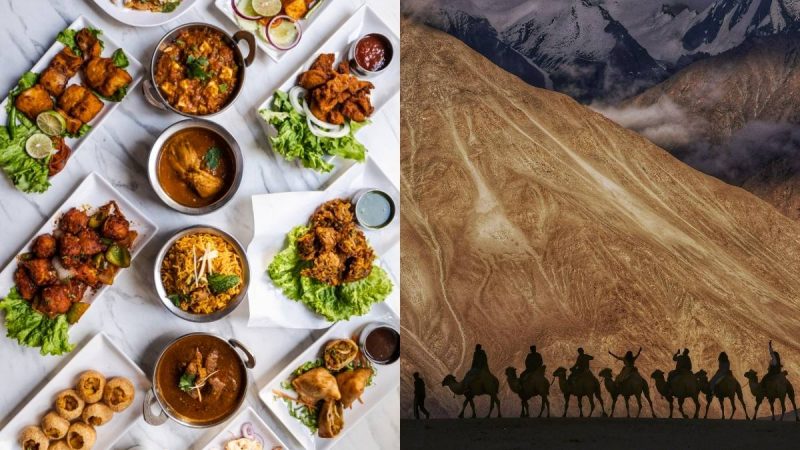In the diverse culinary tapestry of India, the tradition of Mughlai cuisine stands as one of its most vibrant threads. Most of the Mughlai dishes came to India when the Mughals spread their expansion to the Indian subcontinent. However, the Silk Route, which is one of the most popular trade routes in the ancient world, also played a significant role in influencing Indian cuisine. Here are eight popular Mughlai dishes whose journeys to India were at least indirectly, if not directly, aided by the Silk Route.
Mughlai Dishes That Came To India Through The Silk Route
It is important to note that many of these dishes blossomed into the culinary masterpieces we know them to be only after they arrived in India. However, certain concepts and cooking methods used in these dishes were popularised owing to the Silk Route.
1. Layered Rice With Meat From Persia To Biryani In India
What we know and love as Biryani today came to us, in part, because of the Silk Route. The concept of layering rice with spiced meat spread owing to Persian traders and travellers. Preparing rice in such a manner was popular in the Persian regions. This concept travelled to India and in each region, it blossomed into its own unique form of Biryani like Chettinad, Hyderabadi or Kolkata.
2. Grilled Spiced Meats From Central Asia To Kebabs In India
The concept of grilling spiced meats reached the Silk Route with the nomads from Central Asia. On its journey through the Silk Route, the concept adapted to regional flavours, including India, giving birth to a wide array of kebabs.
3. Mild Creamy Gravy From Central Asia To Spicy Korma In India
The Korma we know and love today has its origins in Central Asia. At the time, the dish was very mild — a far cry from the spicy gravy we know today. The spiced version of the dish only came into existence after the dish travelled to India. What we inherited from the original Persian dish was the use of nuts in gravies.
4. Persian Pilaf To Indian Pulao
Similar to biryani, what we got from the Silk Route was a way of cooking rice with aromatics. In Persia, rice made using such a technique was known as Pilaf. In India, it became Pulao with a plethora of regional variations.
5. Leavened Flatbread From Persia To Naan In India
It is likely that Persian bakers sowed the seeds of this bread and when it came to India, we started baking them in Tandoors and turned them into the delicious naan we love today.
6. Quick Snack From Central Asia To Samosa In India
Samosa is now an unequivocal part of Indian cuisine but it has its roots in Central Asia. It emerged first as an item that is easy to pack and consume on the road for traders and travellers. This transformed into the Samosas that we know and love today.
7. Hearty Stew From The Arab Region To Haleem In Hyderabad
When we speak of Haleem now, it is impossible for us not to think of Hyderabad. However, this hearty stew originated in the Arab region and travelled to India from the maritime Silk Route.
8. Faloodeh From Persia To Falooda In India
The thin sweet noodles from Persia transformed into a beloved dessert in India. The pomegranate molasses was swapped for Rose syrup and Desis added basil seeds which made the dessert our own.
Also Read: Experience Everything Royal And Relish Mughlai Cuisine At UAE’s Jehangirs Restaurant
Which of these dishes is your favourite? Let us know in the comments section below!
Cover Image Credits: Canva Images
For more such snackable content, interesting discoveries and the latest updates on food, travel and experiences in your city, download the Curly Tales App. Download HERE.

